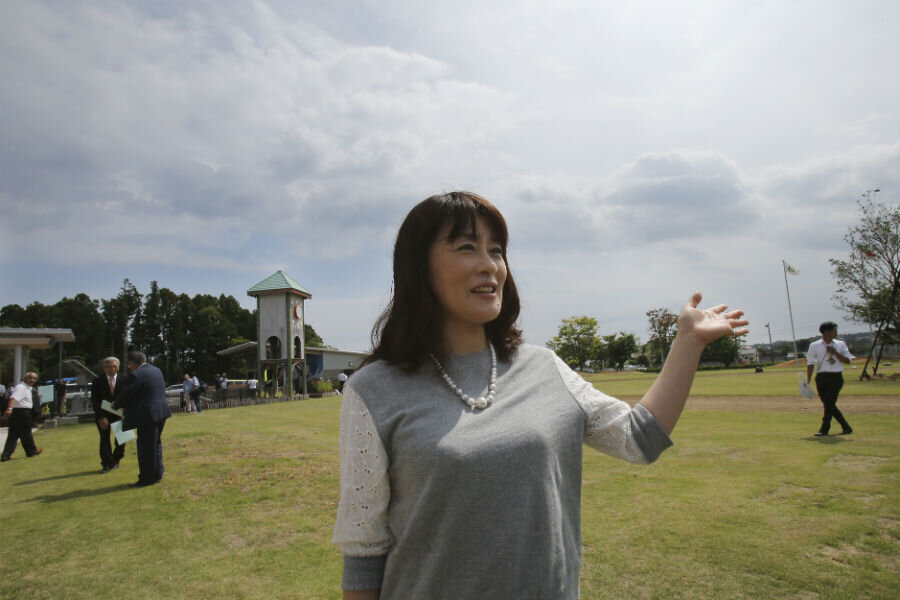Japan reopens radiation-hit Naraha. Who's returning home?
Loading...
For the first time in four and a half years, those who lived in the northeastern town of Naraha will be able to return home, the Japanese government announced Saturday.
The town, located 12 miles south of the Fukushima nuclear plant, once held 7,400 residents – all of whom were forced out by the nuclear disaster that triggered mass evacuations.
As officials confirmed that radiation had finally been contained to safe levels, Naraha became the first town to allow all its people to return home permanently, according to the BBC.
The Associated Press reports that six other municipalities were ordered to empty entirely due to contamination from the earthquake and tsunami that led to a nuclear meltdown in 2011. As of today, some 100,000 people from about 10 municipalities still cannot go home.
It was a day of hope for Toshiko Yokota, a 53-year-old homemaker who has been living in another Fukushima town since the disaster.
She'd come to clean her home, Ms. Yokota told the AP, a house damaged by pests and rainwater leaks that now needs a full renovation.
Like many residents, Ms. Yokota said she was still concerned about any lingering radiation, as well as a lack of infrastructure in the once-abandoned town. But she and her husband still hope to move home within a few years.
“My friends are all in different places because of the nuclear accident, and the town doesn't even look the same,” she said. “But this is still my hometown and it really feels good to be back.”
City officials have said a hospital, medical clinic, and shopping center are on the way to completion, all within the next year. But so far, Yokota, with her plans to return, appears to be in the minority of former residents.
Naraha’s trial period in April allowing evacuees to begin preparing for permanent resettlement only saw about 100 of the nearly 2,600 households sign up, according to the AP.
By the end of August, The Asahi Shimbun reported that just over 10 percent of the town’s population was registered to stay overnight in preparation for relocation.
According to a government survey, most evacuees – 53 percent – are either not ready to return home permanently, or undecided, some saying they're still worried about the radiation, and others that they've found jobs elsewhere.
As the first, Naraha represents a case study for other towns affected by the Fukushima disaster, and Mayor Yukiei Matsumoto said at a reopening ceremony that he hoped it would set a good example of recovery.
As a whole, Japan’s efforts to clean up Fukushima and make it livable again are the most extensive and expensive in history, reports The Los Angeles Times. But many Japanese still see it “as a solemn obligation to right a terrible wrong.”
As of March, 105 cities, towns, and villages affected by the accident were undergoing decontamination, according to the Times.
The government has set a goal of lifting all evacuation orders by March 2017, except for those in the worst hit areas.
“Our clock started moving again,” said Mayor Matsumoto. “The lifting of the evacuation order is one key step, but this is just a start.”
This report contains material from The Associated Press.






